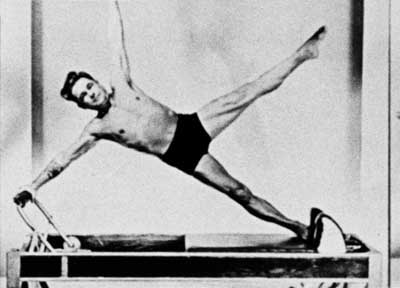What is Pilates?
At the core of Pilates is the ethos of a strong and lasting mind/body connection. It is much more than just exercise but is an intelligently crafted movement system developed over years of work and expertise by Joseph Pilates and those that he taught.
A Pilates class is a full-body workout through low-impact exercise with the goal of developing strength and flexibility in both mind and body. A class will typically emphasize breath-work, precision, centering, flow and complete concentration. The exercises will often include resistance training either through body weight or Pilates equipment to build muscular strength, stability and endurance.
You will find that you can incorporate what you learn in your Pilates classes into your daily life, becoming more conscious of how you stand and walk, how you sit at your desk or computer and how you play sports.
It is integration of mind and body – intelligent exercise.
The Benefits of Pilates
Joseph Pilates developed Pilates as a system of movement and therapeutic exercise over a span of sixty years. Pilates really can make a difference to your well-being, through 'low impact' exercises that won't take a toll on your body. Pilates can do all of the following.
Increase your mind and body connection
Build strength, balance, mobility and stability
Decrease stress and fatigue
Stimulate circulation by facilitating proper musculoskeletal alignment
Strengthen your core and improve the health of your spine
Promote new neuromuscular patterns, body awareness, and precise coordination
Help prevent, rehabilitate from and improve injury and back pain
Improve sports performance
Who is it for?
Pilates is suitable for all ages and fitness levels. It can be used as a compliment to an existing fitness regime or as a kick-start to fitness. Pilates can be used as a rehabilitative tool for recovering from injury or coping with conditions such as MS, ME, back and neck conditions, osteoarthritis, rheumatoid arthritis, fibromyalgia, osteopenia and osteoporosis. The Pilates Space classes also cater for pre and post natal.
Who was Joseph Pilates?
Joseph Pilates (1880-1967) began developing his exercise system in Germany in the early 1900’s.
He was a frail and sickly child and became determined to overcome this fragility and develop a strong healthy body. Instead of following an established fitness regime, he experimented with as many approaches as he could including Yoga, gymnastics, self-defence, dance, circus-training and weight training. Using the most effective aspects of each of these methods, he devised a system that enabled him to improve his health and develop a body that was so impressive that he was asked to pose for anatomical charts!
He moved to England, and because of his nationality was interned when war broke out. He spent the war working in the camp infirmary and further developing his techniques. He invented makeshift aids by attaching bedsprings in various positions to rehabilitate injured bedridden patients. Modern versions of this equipment can be found in Pilates studios today. When the 1918 flu epidemic struck England , killing thousands of people, not a single one of his trainees died.
In the late 1920's Joseph Pilates emigrated to the United States where he opened an exercise studio that became popular with dancers, actors, gymnasts and athletes. By the 1960's his clients included famous names such as George Balanchine, The New York City Ballet and Martha Graham's Modern Dance Company. Over the years, as advances have been made regarding the workings of the body and exercise, the Pilates method has been adapted and developed into a safe effective form of exercise that can be practiced by almost everyone.



